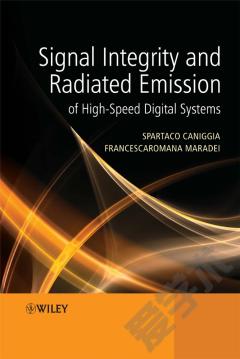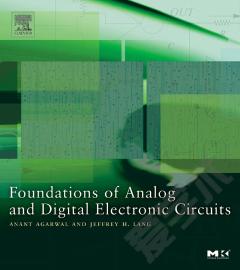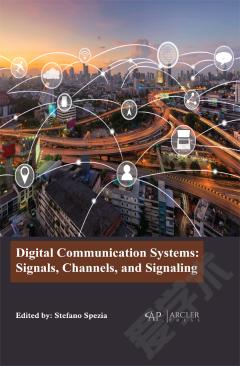Transmission Lines in Digital and Analog Electronic Systems —— Signal Integrity and Crosstalk
----- 数字与模拟电子系统的输电线路:信号完整性与串扰
Preface. 1 Basic Skills and Concepts Having Application to Transmission Lines. 1.1 Units and Unit Conversion. 1.2 Waves, Time Delay, Phase Shift, Wavelength, and Electrical Dimensions. 1.3 The Time Domain vs. the Frequency Domain. 1.3.1 Spectra of Digital Signals. 1.3.2 Bandwidth of Digital Signals. 1.3.3 Computing the Time-Domain Response of Transmission Lines Having Linear Terminations Using Fourier Methods and Superposition. 1.4 The Basic Transmission Line Problem. 1.4.1 Two-Conductor Transmission Lines and Signal Integrity. 1.4.2 Multiconductor Transmission Lines and Crosstalk. Problems. PART I TWO-CONDUCTOR LINES AND SIGNAL INTEGRITY. 2 Time-Domain Analysis of Two-Conductor Lines. 2.1 The Transverse ElectroMagnetic (TEM) Mode of Propagation and the Transmission-Line Equations. 2.2 The Per-Unit-Length Parameters. 2.2.1 Wire-Type Lines. 2.2.2 Lines of Rectangular Cross Section. 2.3 The General Solutions for the Line Voltage and Current. 2.4 Wave Tracing and Reflection Coefficients. 2.5 The SPICE (PSPICE) Exact Transmission-Line Model. 2.6 Lumped-Circuit Approximate Models of the Line. 2.7 Effects of Reactive Terminations on Terminal Waveforms. 2.7.1 Effect of Capacitive Terminations. 2.7.2 Effect of Inductive Terminations. 2.8 Matching Schemes for Signal Integrity. 2.9 Bandwidth and Signal Integrity: When Does the Line Not Matter? 2.10 Effect of Line Discontinuities. 2.11 Driving Multiple Lines. Problems. 3 Frequency-Domain Analysis of Two-Conductor Lines. 3.1 The Transmission-Line Equations for Sinusoidal, Steady-State Excitation of the Line. 3.2. The General Solution for the Terminal Voltages and Currents. 3.3 The Voltage Reflection Coefficient and Input Impedance to the Line. 3.4 The Solution for the Terminal Voltages nad Currents. 3.5 The SPICE Solution. 3.6 Voltage and Current as a Function of Position on the Line. 3.7 Matching and VSWR. 3.8 Power Flow on the Line. 3.9 Alternative Forms of the Results. 3.10 The Smith Chart. 3.11 Effects of Line Losses. 3.12 Lumped-Circuit Approximations for Electrically Short Lines. 3.13 Construction of Microwave Circuit Components Using Transmission Lines. Problems. PART II THREE-CONDUCTOR LINES AND CROSSTALK. 4 The Transmission-Line Equations for Three-Conductor Lines. 4.1 The Transmission-Line Equations for Three-Conductor Lines. 4.2 The Per-Unit-Length Parameters. 4.2.1 Wide-Separation Approximations for Wires. 4.2.2 Numerical Methods. Problems. 5 Solution of the Transmission-Line Equations for Three-Conductor Lossless Lines. 5.1 Decoupling the Transmission-Line Equations with Mode Transformations. 5.2 The SPICE Subcircuit Model. 5.3 Lumped-Circuit Approximate Models of the Line. 5.4 The Inductive-Capacitive Coupling Approximate Model. Problems. 6 Solution of the Transmission-Line Equations for Three-Conductor Lossy Lines. 6.1 The Transmission-Line Equations for Three-Conductor Lossy Lines. 6.2 Characterization of Conductor and Dielectric Losses. 6.2.1 Conductor Losses and Skin Effect. 6.2.2 Dielectric Losses. 6.3 Solution of the Phasor (Frequency-Domain) Transmission-Line Equations for a Three-Conductor Lossy Line. 6.4 Common-Impedance Coupling. 6.5 The Time-Domain to Frequency-Domain (TDFD) Method. Problems. Appendix. A Brief Tutorial on Using PSPICE. Index.
{{comment.content}}








 京公网安备 11010802027623号
京公网安备 11010802027623号